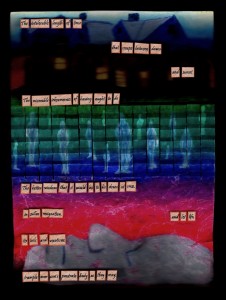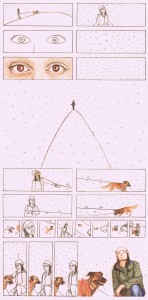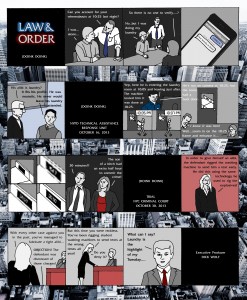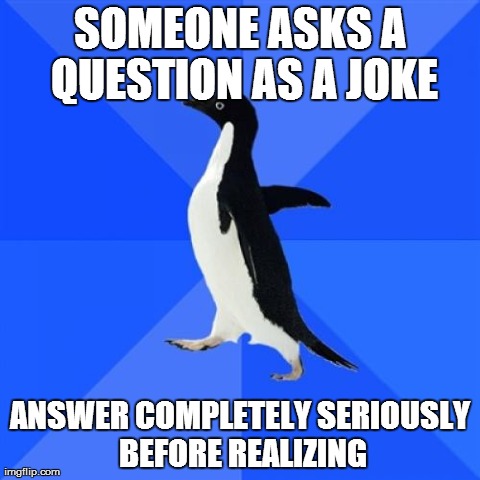As an English major, I spend a lot of time on the C Floor of Firestone. Although already not one of the brightest or most welcoming floors of the library, the recent construction which drywalled off a large part of it has made it particularly depressing for me. I miss strolling the dank, poorly lit aisles of the South West wing, seemingly traveling back in time to the 1970s while browsing literary criticism. Yet, despite the circuitous detour one must now take to reach the study spaces and most of the books, I still love the C Floor. So, for this experiment I thought I might make it more inviting with the addition of a friendly face.
My roommate and I (also an English major) acquired some time ago a cardboard cut-out of F. Scott Fitzgerald, whom we affectionately call Fitz.

I decided to make him the first thing people would see as they got off the elevators to the C floor.
The C floor is the kind of place people familiar with it tend to walk through without seeing. I hoped, with such a deviation from the prosaic, that I might encourage a few to see the C floor more actively.

He’s not easily recognizable, as this is a middle-aged Fitz, not the young fresh-out-of-Princeton burgeoning author some might know, but I appreciated the added confusion this created. I placed him right next to the “information center” and moved the “Atrium” arrow sign from its original place so that it was right next to him, as if to suggest he were a helpful librarian offering maps and guidance.
After a while I added his name tag:

 *
*
*his real signature (class year added)
Part of my tactic was complete detachment and indifference. I wanted Fitz to seem as if he had as much right to be there as anyone, as if he were at home (and should he not be? Firestone was not built in his day but the C-floor is where most of his works (at least the publicly accessible ones) are kept [PS3511.I9]). My stance was to situate myself at a desk somewhat at a distance from Fitz and appear to be working, such that when people exited the elevator they would not immediately associate me with the figure. I also would very purposely not make eye contact with any individuals I noticed noticing Fitz, so that it would not appear as if I were expecting a reaction from them. The idea was to allow the reactions to be in their purest form. If asked, I planned to not give direct answers (unless asked by a librarian or security guard who looked displeased with Fitz’s presence).
Additionally, before setting up Fitz, I sat in my chosen spot for an hour – establishing my presence in the space and thus my innocence to those who passed through multiple times. The best was a group of several construction workers who exited an elevator, in what one of them termed “a parade,” before the installation of Fitz. Half an hour later they paraded back, now past Fitz’s smiling face, while I still sat nonchalantly working on my laptop as they had seen me earlier. Two of them laughed and they did ask each other about it – which proved a theory I had in mind: that people would only remark about Fitz if with a companion who could confirm it as an anomaly (since I refused to be a source of empathy). Most people were alone.
Finally, I added a sign that said “Welcome to the C floor!”

This would be Fitz in his final state, and I think he adds very much to the C floor as such.
Alas, this experiment would have been better with a hidden camera! I would’ve liked to have captured the many confused, contemplative looks I saw, since few people said anything. I wanted to see how long it would take for someone to address me or to ask the library staff about it. My goal was to pretend that his presence was normal though it obviously was not, and it appeared that, ultimately, people bought it. Even library staff did not question it or me (which is how I anticipated the experiment might abruptly end).
Rough statistics:
4 people charged out of the elevator past him with little a second glance
5 people gave prolonged double takes but not much else
5 people looked at him intensely
4 people looked at him intensely, left, then came back and looked at him intensely again
7 people (after the addition of the name tag) squinted at his name tag
3 people (after the addition of the name tag) said “F. Scott Fitzgerald” audibly
3 people chuckled
0 people addressed me or, within my hearing distance, inquired of anyone else about him
Limitations:
- Time. Specifically, fitting my schedule to when Firestone is open. This was in fact my second attempt. I at first tried late one night but it became clear that no one enters the C floor that late, they only leave it. I then tried the next morning and though there was a lot of foot traffic it was mainly of library staff and construction workers, not my target audience—students. So, given more time and planning I would choose a peak period, I imagine around early evening. In the end, he was only up for about an hour.
- Lack of technology. Specifically, a hidden camera.
- Fitz is precious. Specifically, I would have loved to leave him somewhere an extended period of time to see what would have happened (would a student have taken a picture of him and posted it to Facebook? Would librarians have moved him?), but I could not risk something happening to him.







 *
*


